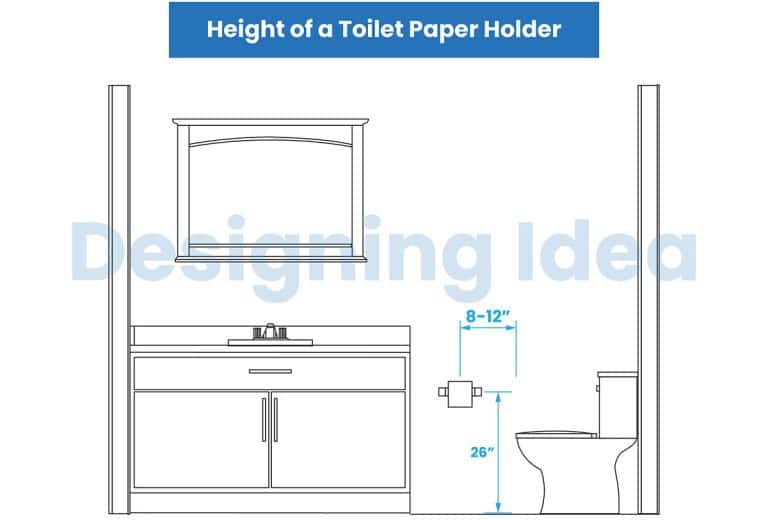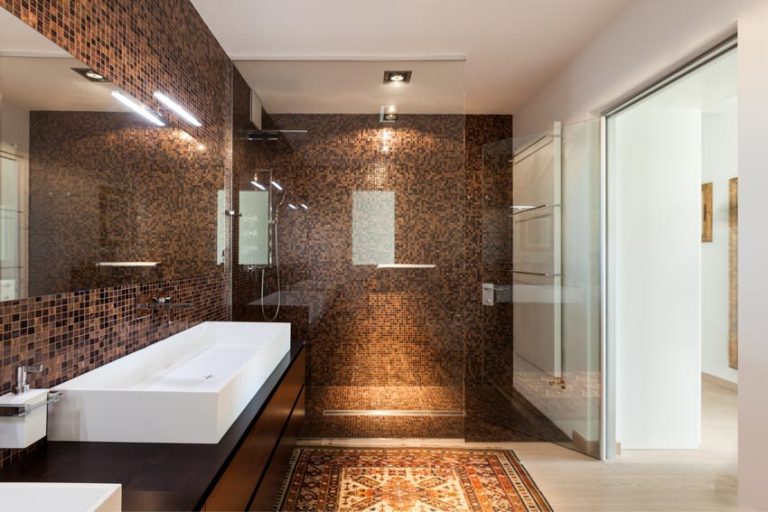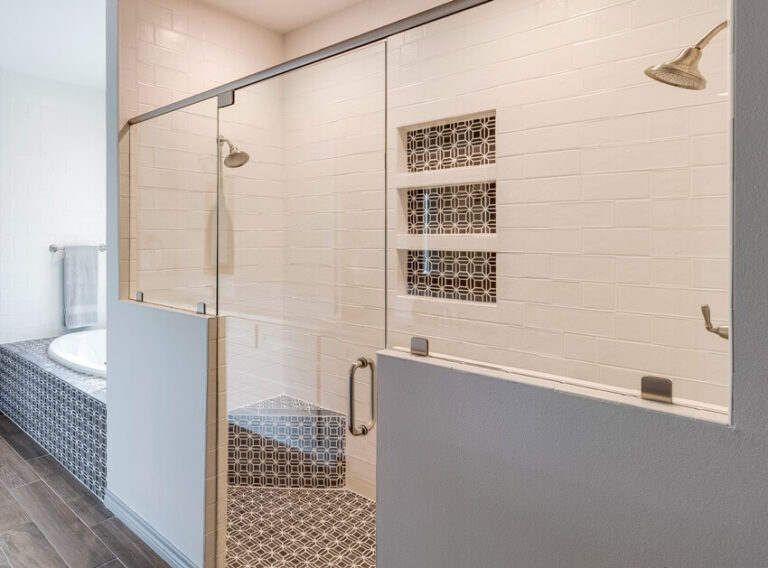9 Perfect Bathroom Colors That Complement Gray

Gray has secured its place as the MVP of modern bathroom palettes, and for good reason. This tranquil hue brings a cohesive yet customizable aesthetic that works with nearly any style. But gray is anything but one-note. There are many different shades and tons of options when it comes to bathroom colors that go with gray.
Warm, beige-tinged grays exude a soft, relaxed vibe. Crisp, blue-based grays feel modern and sleek. Understanding these subtle undertones allows you to curate a custom gray that reflects your personality in the most private of spaces. Play up the warmth with natural woods and earthy marble. Go full modern minimalist with cool grays and black accents.
Gray provides a versatile blank canvas to craft a spa-like oasis or striking contemporary statement. So embrace this infinitely adaptable neutral to create your dream bathroom sanctum.
(Images generated using AI to showcase potential design ideas.)Classic White and Gray Combinations
White and gray have an enduring, classic beauty that never goes out of style. Creamy whites dance elegantly with warm grays. Crisp, bright whites sing in perfect harmony with cool silvery grays. Incorporate depth and dimension while keeping the aesthetic clean through the thoughtful use of texture – consider matte subway tiles or ceramic fixtures juxtaposed with plush, textured towels. Thoughtfully pairing whites and grays with contrasting textures creates a soothing oasis with timeless appeal.
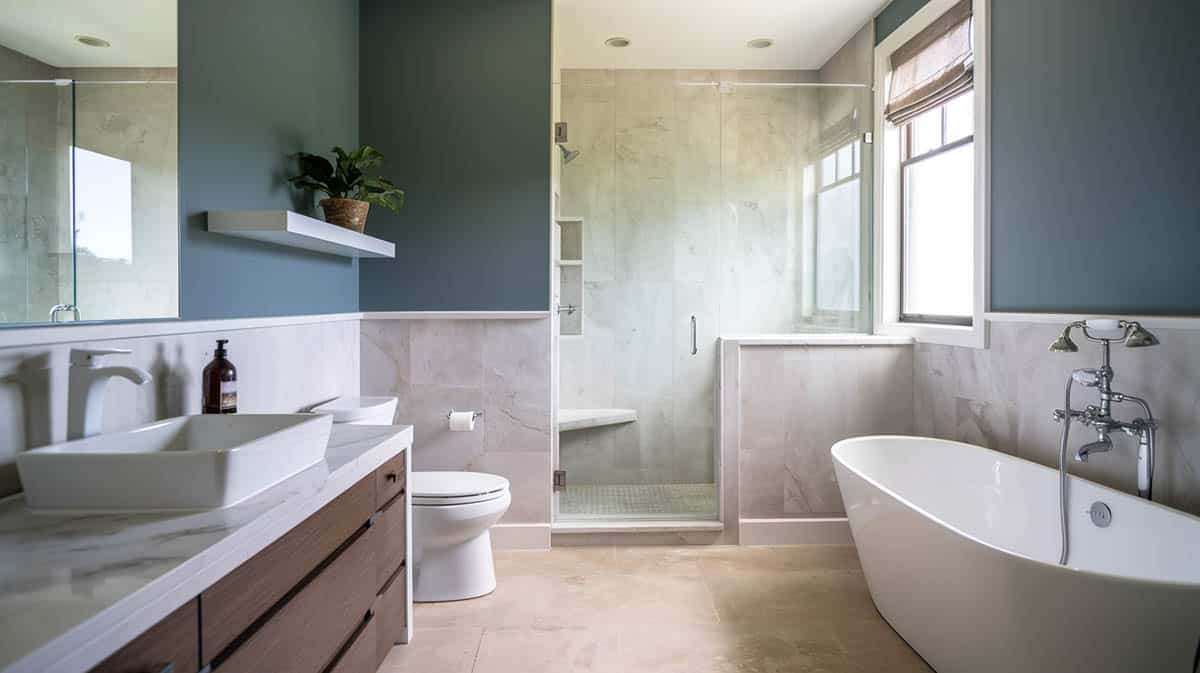
Implementation strategies:
- Use white fixtures against medium-toned gray walls for classic contrast
- Install white marble countertops with gray veining for natural cohesion
- Select white textiles with subtle gray patterns to unify the space
- Consider white wainscoting below gray walls for architectural interest
Calming Blue Palettes
Blue tones naturally complement gray, creating a bathroom palette reminiscent of cloudy skies and tranquil waters. Navy blue offers dramatic contrast, particularly effective as an accent wall or in tilework. Powder blue provides a softer approach, ideal for creating a spa-like atmosphere.
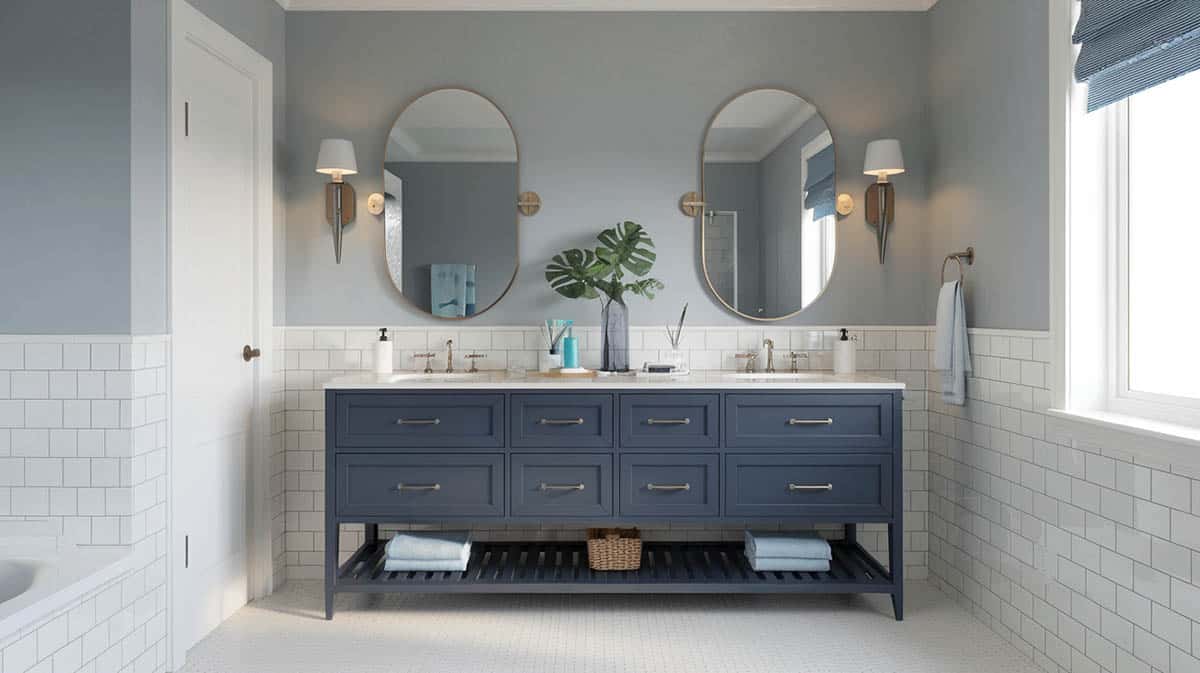
Specific applications:
- Install navy blue vanity cabinets against light gray walls
- Use powder blue mosaic tiles in a gray-tiled shower
- Add blue glass accessories on gray countertops
- Paint a blue ceiling above gray wallpaper for unexpected depth
Natural Green Elements
Green introduces an organic element to gray bathrooms, connecting the space to nature. Sage green offers subtle sophistication, while emerald provides luxurious drama. Living plants thrive against gray backdrops, adding vitality to the space.
According to HGTV A sage green adds a touch of nature and tranquility to a gray bathroom. This combination is particularly effective in creating a spa-like atmosphere.

Design strategies:
- Paint vanity cabinets in sage green against warm gray walls
- Install emerald green accent tiles in shower niches
- Position potted ferns and air plants on gray windowsills
- Select green glass shower doors with gray marble surrounds
Warm Metallics
Metallic finishes inject warmth and glamour into gray bathrooms. Gold fixtures create luxury, brass adds vintage charm, and copper introduces rustic warmth. The key lies in thoughtful distribution and finish consistency.
The experts at The Spruce advise that adding metallic accents, such as silver or gold, can enhance the elegance of a gray bathroom, providing a touch of glamour and sophistication.

Application techniques:
- Install brushed gold faucets and shower fixtures
- Mount brass sconces alongside gray marble backsplashes
- Incorporate copper vessel sinks with gray quartz countertops
- Mix metallic finishes in a 60-30-10 ratio for balance
Blush Pink Accents
Blending blush pink with gray creates an elegant, yet versatile bathroom palette. The integration balances masculine qualities of gray with feminine accents of pink across various design aesthetics. When incorporating blush pink, pay attention to color temperature, material selection, application technique, proportionality, and lighting. For example, pair cool grays with warm pinks for contrast or match tones for harmony. Use natural materials like marble and tile to bridge the colors.
Dusty roses or muted blushes integrated subtly with gray backgrounds form refined spaces. Follow the 60-30-10 rule for balancing dominant grays, secondary vanities or showers, and blush accent pieces. Proper lighting ensures optimal color rendering – install warm LEDs to draw out pink undertones. Thoughtful implementation of blush pink with predominant gray creates a sophisticated, enduring bathroom design.
- Muted Blush: A soft blush pink offers warmth and elegance to balance cool gray tones.
- Dusty Rose: For a more subtle effect, pair dusty rose against cooler grays.
Bold Accent Colors
Strategic use of bold colors energizes gray bathrooms without overwhelming the space. Coral and peach tones add warmth, deep purple creates drama, and yellow introduces cheerful brightness.
Mustard Yellow
When decorating a gray bathroom, shades of mustard and yellow can add a lovely pop of color. Warm golden mustard shades energize the space, creating an eye-catching contrast against gray tones. Fold guest towels or bath mats in rich golden hues for a vibrant accent. A printed shower curtain featuring mustard yellow details also makes for fun bathroom styling.
For a softer contrast, try more muted yellow hues. Buttery cream yellows or dusky goldenrods pair beautifully with light to mid-range gray tones. They give a subtle warmth, like the first glimpses of sunrise on an overcast morning. Muted yellows work nicely in textiles like window treatments or ceramic accessories. Try gray and yellow hand towels folded neatly on a wall shelf for a pleasant pairing. Whether you prefer the punch of golden mustard or the gentler contrast of hazy yellow, shades of yellow sunshine can brighten up gray bathrooms.
Teal And Turquoise
When designing a gray bathroom, consider incorporating splashes of vibrant teal or turquoise to give the space a modern, relaxing oasis-like feel. Light teal works beautifully with gray, lending the room an airy, refreshing vibe that evokes thoughts of gentle ocean waves. Integrate this color through towels, shower curtains, or an accent wall behind the tub. The soft greenish-blue teal hue prevents the grays from feeling too sterile or cold.
For a brighter, bolder accent, turquoise accessories can make a gray bathroom pop with personality. Vases filled with turquoise glass flowers, turquoise ceramic soap dispensers, or even a small decorative turquoise stool beside the bathtub can enliven the grays. Like light teal, turquoise adds liveliness but with more saturation, allowing you to customize the look from subtle to striking.
Implementation guidelines:
- Paint a coral accent wall in a primarily gray bathroom
- Hang purple towels against light gray walls
- Install yellow ceramic accessories on gray shelving
- Use colorful art prints to tie bold accents together
Neutral Companions
Neutral colors enhance gray’s sophistication while maintaining visual calm. Beige softens stark grays, taupe creates seamless transitions, and wood elements add natural warmth.
At Good Housekeeping they say that you can’;t go wrong with the classic combination of a soft gray combined with wood accents for a timeless look. With lighter accents one can brighten a gray bathroom, making it feel more spacious and airy.
Design principles:
- Blend greige (gray-beige) tiles with pure gray walls
- Install wooden vanities against cool gray backdrops
- Use taupe textiles to bridge gray and beige elements
- Add black hardware for definition and contrast
Implementation Strategies
Successful color implementation requires careful planning and execution:
Color Distribution:
- Follow the 60-30-10 rule for primary, secondary, and accent colors
- Consider vertical color balance from floor to ceiling
- Plan color placement to guide the eye through the space
Lighting Considerations:
- Test colors under both natural and artificial lighting
- Account for changing light conditions throughout the day
- Select lighting fixtures that enhance chosen colors
Design Tips and Best Practices
When decorating a gray bathroom, choosing the right accent colors can be tricky but makes all the difference. Start by painting large color swatches directly on the walls to see how they look in the space and lighting. A color that appears muted or dull on a little paint chip may come alive when covering an entire wall.
Next, consider the size and lighting of your bathroom. Small spaces feel cozier with warm earth tones like sage green or terracotta. Bigger rooms can handle bold, dramatic colors like navy blue. Bathrooms with lots of natural light can support cooler hues like powder blue. Dark caves lit only by a single bulb call for warming colors like buttercream.
As you choose your paint colors, make sure all the undertones work together. If your tile, tub, mirrors and fixtures boast cool blue undertones, stick with hues in the same color family like pale blue or gray. Clashing a cool gray paint with warm wood cabinets creates visual dissonance.
Finally, balance flashy accent colors with enough neutral shades. Going overboard on intensely bold reds without enough beige to give the eyes a break creates an overwhelming effect. Anchor your loud color statement with swaths of neutral gray before accessorizing with layers of color.
The most successful designs typically follow the 60-30-10 rule:
- 60% dominant color (your base gray)
- 30% secondary neutral tones (beige, white, or complementary gray shades)
- 10% accent colors (bold or vibrant hues)
Common Mistakes to Avoid
Prevent design pitfalls by:
- Testing undertones in various lighting conditions
- Installing adequate lighting for accurate color representation
- Balancing dark and light elements for proper contrast
- Considering the scale of patterns and color blocks
Remember that successful bathroom design requires patience, planning, and attention to detail. Take time to sample colors, test combinations, and visualize the complete space before making final decisions.

